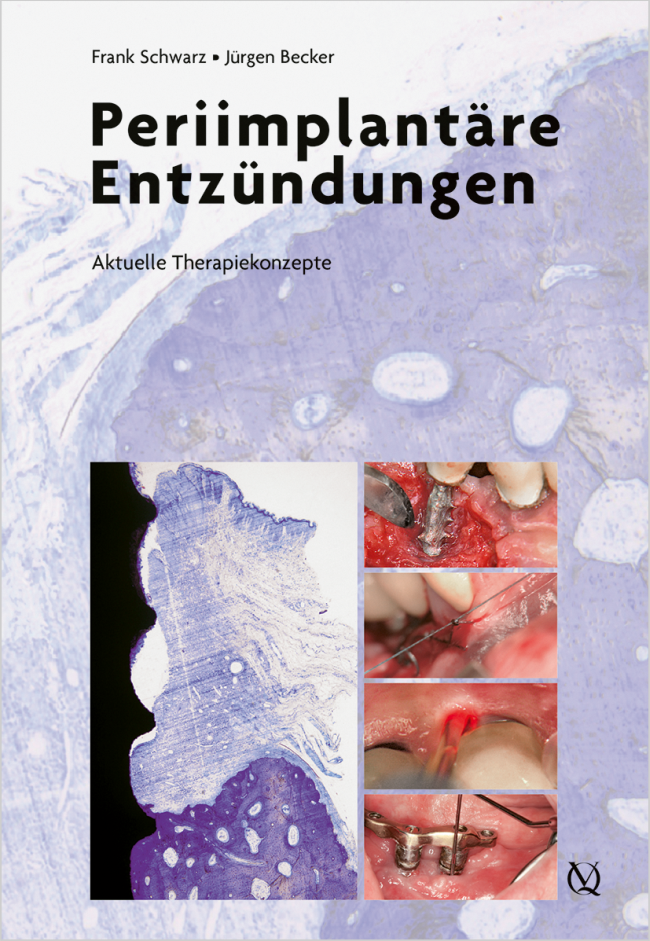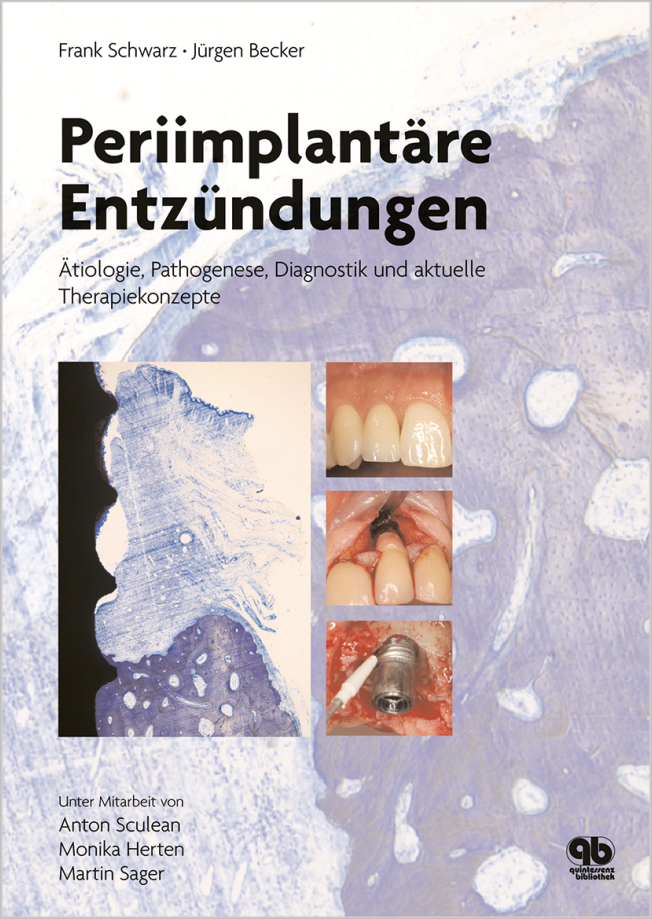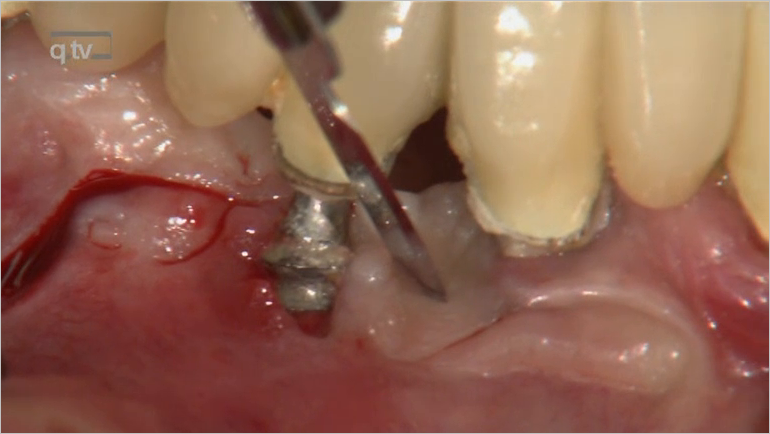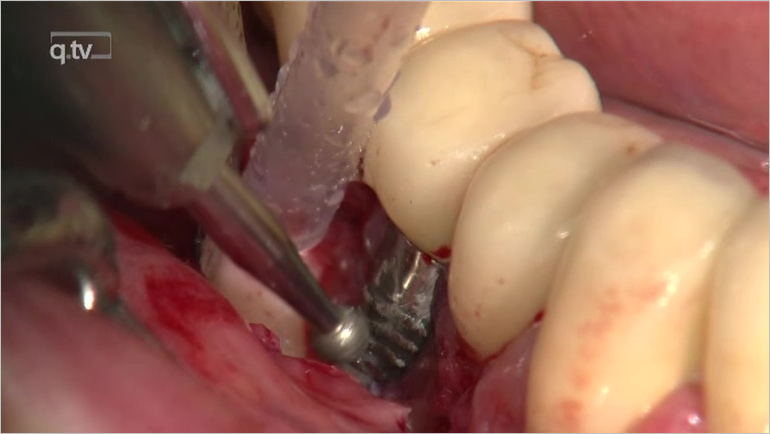Implantologie, 3/2023
Seiten: 257-266, Sprache: DeutschKallab, Sandra / Schwarz, Frank / Becker, Jürgen / Brunello, GiuliaImplantate aus Zirkoniumdioxid erweisen sich als vielversprechende Alternative zu herkömmlichen Titanimplantaten. Eine 9-Jahres-Follow-up-Nachuntersuchung einer prospektiven klinischen Beobachtungsstudie dieser Arbeitsgruppe liefert weitere Daten zum Langzeiterfolg von Zirkoniumdioxid-Implantaten, welche in diesem Beitrag unter Bewertung der aktuell verfügbaren Literatur zusammenfassend dargestellt werden sollen.
Manuskripteingang: 15.08.2023, Annahme: 22.08.2023
Schlagwörter: Zirkoniumdioxid-Implantate, Langzeitstudien, Titanimplantate, periimplantäre Mukositis, Periimplantitis
Parodontologie, 4/2020
Seiten: 363-369, Sprache: DeutschBecker, JürgenDer Artikel gibt einen Überblick über die aktuellen rechtlichen Rahmenbedingungen zur Anwendung von Röntgenstrahlung in der Zahnmedizin und über die Voraussetzungen zum Erwerb der Fachkunde im Strahlenschutz.
Manuskripteingang: 29.08.2020, Annahme: 30.09.2020
Schlagwörter: Strahlenschutzgesetz, Strahlenschutzverordnung, Richtlinien zur Röntgenverordnung
International Journal of Periodontics & Restorative Dentistry, 5/2015
DOI: 10.11607/prd.2320, PubMed-ID: 26357694Seiten: 646-653, Sprache: EnglischSchwarz, Frank / John, Gordon / Becker, JürgenThis retrospective analysis of five reentry cases reports on the clinical defect healing after combined surgical resective/regenerative therapy of advanced peri-implantitis. A second surgery was necessary because of a clinical need for additional treatment procedures at the respective implant sites after healing periods of 8 months to 6.5 years. All patients underwent the same standardized procedure including access flap surgery, implantoplasty at bucally and supracrestally (> 1 mm) exposed implant parts, surface decontamination, and augmentation of the intrabony (Class I) components using a natural bone mineral and a native collagen membrane. Clinical defect resolution (DR) of the Class I component was evaluated. In two patients, clinical and radiographic signs suggested a reinfection (ie, case 3-mesial aspect; case 5-mesial and distal aspects). Mean DR values ± standard deviation were 59.4% ± 47.59% (95% confidence interval [CI], 0.31%-118.49%). When infected aspects were excluded, resulting values were 85.76% ± 4.86% (95% CI, 78.02%-93.50%). The presented surgical procedure was associated with a clinically important DR in advanced peri-implantitis defects.
Implantologie, 3/2015
Seiten: 247-259, Sprache: DeutschSchwarz, Frank / Becker, JürgenEin Update zur Epidemiologie, Ätiologie, Diagnostik, Prävention und TherapiePeriimplantäre Infektionen stellen eine große Herausforderung in der Implantologie dar. Im vorliegenden Übersichtsartikel sollen dem Klinker ein gegenwärtiges Update zur Epidemiologie und Ätiologie, zu assoziierten Risikofaktoren, zur Diagnostik sowie Behandlungskonzepte für die Prävention und das Management der periimplantären Mukositis und Periimplantitis vermittelt werden.
Schlagwörter: Periimplantäre Mukositis, Periimplantitis, Epidemiologie, Ätiologie, Diagnostik, Therapie
International Journal of Periodontics & Restorative Dentistry, 4/2014
DOI: 10.11607/prd.1794, PubMed-ID: 25006766Seiten: 488-495, Sprache: EnglischSchwarz, Frank / John, Gordon / Sahm, Narja / Becker, JürgenThis case report presents a 3-year follow-up of the clinical outcomes of a combined surgical therapy for advanced peri-implantitis with concomitant soft tissue volume augmentation using a collagen matrix. One patient suffering from advanced peri-implantitis and a thin mucosal biotype underwent access flap surgery, implantoplasty at buccally and supracrestally exposed implant parts, and augmentation of the intrabony components using a natural bone mineral and a native collagen membrane after surface decontamination. A collagen matrix was applied to the wound area to increase soft tissue volume and support transmucosal healing. The following clinical parameters were recorded over a period of 3 years: bleeding on probing (BOP), probing depth (PD), mucosal recession (MR), clinical attachment level (CAL), and width of keratinized mucosa (KM). At 36 months, the combined surgical procedure was associated with a clinically important reduction in mean BOP (100%), PD (4.3 ± 0.5 mm), and CAL (4.4 ± 0.4 mm). Site-level analysis of the buccal aspects pointed to an increase in MR (-1.0 ± 0.4 mm) and a decrease in KM (-1.3 ± 0.5 mm) values at 12 months. However, a regain in mucosal height and KM was noted at 24 months, even reaching respective baseline values after 36 months of healing. The presented combined surgical procedure was effective in controlling an advanced peri-implantitis lesion without compromising the overall esthetic outcome in the long term.
The International Journal of Oral & Maxillofacial Implants, 3/2014
DOI: 10.11607/jomi.2956, PubMed-ID: 24818214Seiten: 728-734, Sprache: EnglischJohn, Gordon / Becker, Jürgen / Schwarz, FrankPurpose: The purpose of the study was the evaluation of possible cytologic effects of taurolidine to fibroblasts and osteoblast-like cells.
Materials and Methods: Human gingival fibroblasts and SaOS-2 cells were seeded on samples with sand-blasted and acid-etched surfaces. Both groups were treated with taurolidine, chlorhexidine, and pure water with three different treatment times. Three dates of measurements were set to evaluate cell viability, cytotoxicity, and apoptosis.
Results: Highest cytotoxicity was measured in both cell lines in the groups treated with chlorhexidine, while cell viability was lower than in the corresponding taurolidine and pure water groups; on days 3 and 6 these differences were significant. Taurolidine showed similar results to the pure water groups.
Conclusion: The results of this study indicate that taurolidine is biocompatible and gentle to the tested human cells for the application time of a mouthrinse.
Schlagwörter: peri-implantitis, cell culture, antiseptic treatment
Implantologie, 2/2011
Seiten: 115-120, Sprache: DeutschSahm, Narja / Becker, JürgenIm Zusammenhang mit periimplantären Erkrankungen unterscheidet man prinzipiell die Mukositis, die auf das periimplantäre Weichgewebe beschränkt bleibt und die Periimplantitis, die zusätzlich den umgebenden Alveolarknochen mit einbezieht. Um eine periimplantäre Infektion möglichst zu vermeiden kommt einer konsequenten Erkennung und Vermeidung von Risikofaktoren eine entscheidende Bedeutung zu. Insgesamt kann aus den Daten der aktuellen Literatur das Fazit gezogen werden, dass es eine fundierte Evidenzlage dafür gibt, dass eine schlechte Mundhygiene, eine Parodontitisvorgeschichte und Rauchen Risikofaktoren für die Entstehung periimplantärer Infektionen darstellen. Darüber hinaus gibt es Hinweise darauf, dass Diabetes mellitus und regelmäßiger Alkoholkonsum von mehr als 10 g pro Tag ebenfalls Risikofaktoren darstellen könnten. Die Evidenzlage ist hier allerdings begrenzt. Genetische Faktoren und unterschiedliche Implantatoberflächenbeschaffenheit werden dagegen bei ebenfalls limitierter Datenlage kontrovers diskutiert. Weiterhin sollte beachtet werden, dass auch verschiedene iatrogene Faktoren als Risikofaktoren für die Entstehung einer periimplantären Infektion wirken könnten.
Schlagwörter: Implantate, Periimplantitis, Mukositis, Risikofaktoren, Ätiologie
Parodontologie, 2/2010
Seiten: 121-134, Sprache: DeutschSahm, Narja / Schwarz, Frank / Aoki, Akira / Becker, JürgenDas Ziel des vorliegenden Übersichtsartikels ist es, auf der Grundlage der derzeit verfügbaren Evidenz die Wirksamkeit der antimikrobiellen photodynamischen Therapie im Rahmen der Behandlung parodontaler sowie periimplantärer Erkrankungen zu bewerten.
Schlagwörter: Plaqueentfernung, fotosensitive Agenzien, Laserwellenlängen, aPDT, Parodontitistherapie, Periimplantitistherapie
Implantologie, 4/2009
Seiten: 387-398, Sprache: DeutschKünzel, Andreas / Becker, JürgenDer Markt digitaler dentaler Volumentomographen umfasst eine breite Palette von Geräten. Typischerweise belichtet ein DVT-Gerät mit aufrechter Patientenposition auf einen Flat-Panel-Detektor. Die Größe der Aufnahmevolumina variiert von Kleinfeldgeräten bis zu Systemen, die den gesamten Schädel erfassen können, wobei es wichtig ist, mit Blick auf die rechtfertigende Indikation das Field of View indikationsgerecht einblenden zu können. Als minimale Voxelgrößen sind Werte zwischen 80 µm und 200 µm typisch. Die effektiven Dosiswerte nach ICRP2007 werden je nach Gerät und Aufnahmeeinstellungen von 20 µSv bis über 1.000 µSv angegeben. Bezüglich der Möglichkeit zur Anfertigung von Panoramaufnahmen muss zwischen echten Orthopantomographien und nachträglichen Panoramarekonstruktionen unterschieden werden.
Schlagwörter: DVT, digitale Volumentomographie, Geräteüberblick, digitale Systeme, Röntgengeräte
The International Journal of Oral & Maxillofacial Implants, 2/2009
PubMed-ID: 19492639Seiten: 243-250, Sprache: EnglischRothamel, Daniel / Schwarz, Frank / Herten, Monika / Ferrari, Daniel S. / Mischkowski, Robert A. / Sager, Martin / Becker, JürgenPurpose: Because vertical ridge augmentation with autogenous bone blocks carries with it a risk of graft resorption and donor site morbidity, the aim of the present study was to compare histologically the healing following vertical ridge augmentation using screwable, xenogenous deproteinized blocks or autologous bone blocks in dogs.
Materials and Methods: Standardized vertical mandibular defects were surgically created in edentulous ridges of six foxhounds. Two bone blocks (6 3 10 3 15 mm) were inserted on each mandibular side and fixed with both a titanium implant and an osteosynthetic screw. Three different therapies were tested: (1) xenogenous block alone; (2) xenogenous block, covered with a chemically cross-linked collagen membrane; and (3) autologous blocks, harvested during defect preparation. After 3 months of submerged healing, the miniscrews were removed and replaced by dental implants. Following an additional healing period of 3 months, the animals were sacrificed, and dissected blocks were prepared for histomorphometric analysis.
Results: During the primary healing period, three of 12 hemimandibles (six blocks) had to be removed because of severe inflammatory reactions (two xenogenous block sites with collagen membrane, one autologous block site). In general, histologic analysis revealed that xenogenous blocks, used alone or combined with a collagen membrane, exhibited osteoconductive properties on a level equivalent to that of autologous blocks, resulting in means of 50% to 60% of ossification of the blocks. Some parts of the xenograft were encased in soft tissue, partly surrounded by multinuclear giant cells. However, all groups showed obvious signs of bone/graft resorption.
Conclusions: Within the limits of the present study, it was concluded that the examined screwable xenogenous bone block might be a useful scaffold for ridge augmentation procedures. However, the combination of xenogenous blocks with a cross-linked collagen membrane did not appear to improve outcomes.
Schlagwörter: alveolar ridge augmentation, animal study, block augmentation, collagen membrane, guided bone regeneration








